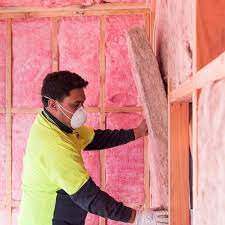When it comes to tile installation, one of the most critical yet often overlooked aspects is the thinset mortar, particularly its thickness. Understanding how thick a thinset layer should be under tile is essential for achieving a durable, aesthetically pleasing, and long-lasting flooring solution. This article delves into the intricacies of thinset application, exploring the factors that influence its thickness and the implications of improper installation.
What is Thinset Mortar?
Thinset mortar, commonly referred to as thinset, is a cement-based adhesive used to bond tiles to a substrate. It is composed of a mixture of cement, fine sand, and water-retaining agents, which enhance its workability and adhesion properties. Thinset is available in various formulations, including modified and unmodified types, each suited for different applications and environments.
Standard Thickness of Thinset Under Tile
The standard thickness for thinset under tile typically ranges from 1/16 inch to 1/4 inch (approximately 1.5 mm to 6 mm). However, several factors can influence the appropriate thickness for a specific installation:
- Tile Size and Type: Larger tiles often require a thicker layer of thinset to ensure proper adhesion and support. For instance, when installing large-format tiles (greater than 15 inches), a thicker bed of thinset (up to 1/4 inch) may be necessary to accommodate any irregularities in the substrate and to provide adequate coverage.
- Substrate Condition: The condition of the substrate plays a significant role in determining thinset thickness. A flat, smooth substrate may require less thinset, while a rough or uneven surface may necessitate a thicker layer to fill in gaps and ensure a level installation.
- Tile Material: Different tile materials have varying weights and porosities, which can affect the amount of thinset needed. For example, heavier natural stone tiles may require a thicker layer of thinset to support their weight and prevent cracking.
- Installation Method: The method of tile installation can also dictate thinset thickness. For example, the back-buttering technique, where thinset is applied to both the substrate and the back of the tile, may require a thicker application to ensure full coverage and adhesion.
Implications of Incorrect Thinset Thickness
Using the wrong thickness of thinset can lead to a host of problems, including:
- Tile Cracking: Insufficient thinset can result in inadequate support, leading to tile cracking or chipping over time.
- Uneven Surfaces: A thin layer of thinset may not fill in substrate imperfections, resulting in an uneven tile surface that can be unsightly and difficult to maintain.
- Poor Adhesion: Too little thinset can compromise the bond between the tile and substrate, increasing the risk of tiles loosening or popping off.
- Moisture Issues: Inadequate thinset thickness can lead to moisture retention, which may promote mold and mildew growth beneath the tiles.
Best Practices for Thinset Application
To ensure optimal results when installing tile, consider the following best practices regarding thinset application:
- Choose the Right Thinset: Select a thinset that is appropriate for your specific tile type and installation environment. Modified thinsets are often recommended for wet areas or when installing large-format tiles.
- Prepare the Substrate: Ensure that the substrate is clean, dry, and free of any contaminants. Repair any cracks or imperfections before applying thinset.
- Use the Correct Trowel Size: The size of the notched trowel used to apply thinset will affect the thickness. A larger notch will create a thicker layer of thinset, while a smaller notch will yield a thinner layer. Choose a trowel size that matches your tile size and type.
- Back-Butter Large Tiles: For larger tiles, consider back-buttering to ensure full coverage and proper adhesion. This technique involves applying a layer of thinset to the back of the tile before setting it in place.
- Check for Coverage: After setting the tiles, periodically lift a few to check for adequate thinset coverage. Ideally, at least 80% of the tile's back should be covered with thinset.
Conclusion
Understanding the appropriate thickness of thinset under tile is crucial for achieving a successful tile installation. By considering factors such as tile size, substrate condition, and installation method, you can ensure that your thinset application is both effective and durable. Adhering to best practices will not only enhance the aesthetic appeal of your tiled surfaces but also extend their lifespan, making your investment worthwhile. Whether you are a DIY enthusiast or a professional installer, mastering the nuances of thinset thickness is an essential skill in the art of tile installation.
